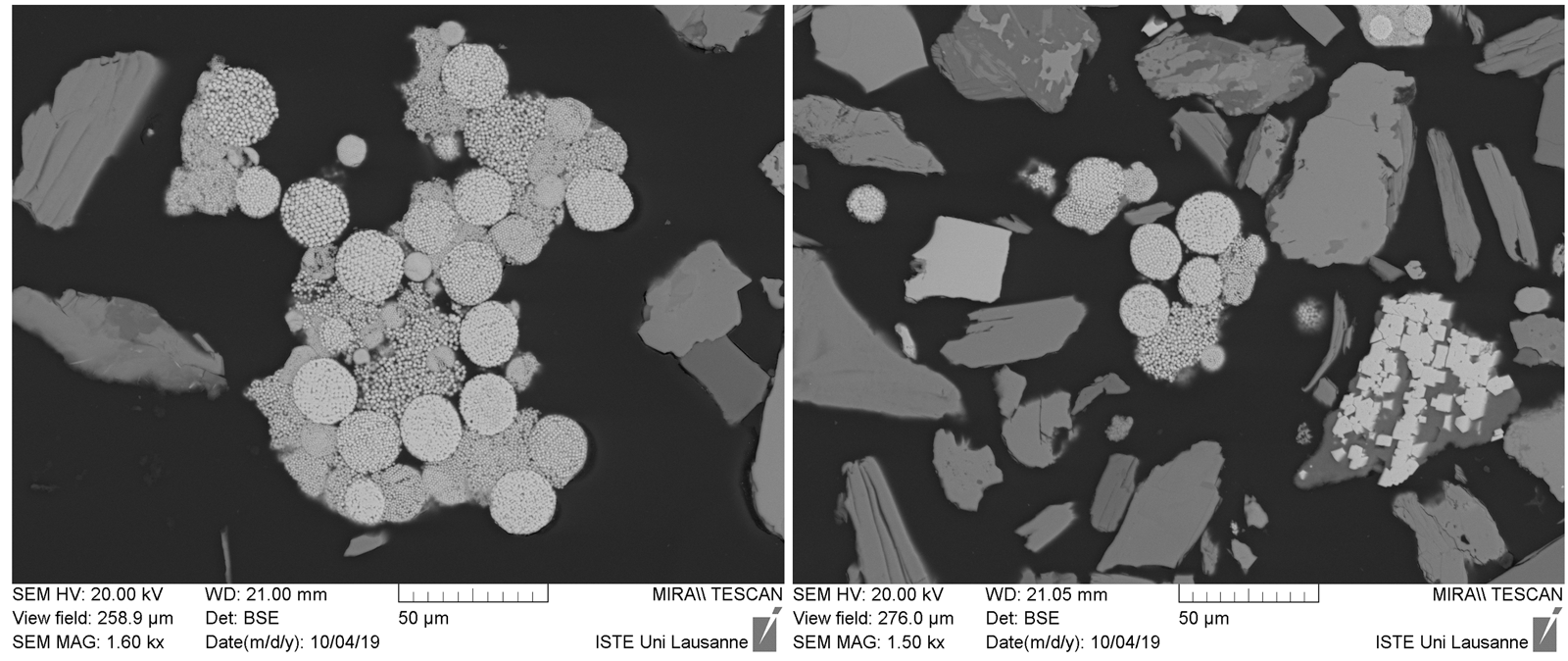
REHOVOT, ISRAEL—November 23, 2023—Organic debris slowly settles into the seabed, where it is consumed by microorganisms. Initially, some microbes use molecular oxygen to oxidize this organic matter, much like we do in the process of aerobic respiration. Once the oxygen runs out, most of the remaining organic matter is consumed by other microbes in an anaerobic respiration process called “microbial sulfate reduction.” In this process, the organic matter is oxidized by sulfate, the fifth most abundant ion in seawater. The sulfate is reduced to sulfide, a small molecule with the distinctive odor of rotten eggs. But in the presence of iron, sulfide is sequestered in a much more appealing (and less smelly) state: the iron-sulfide mineral pyrite, also known as “fool’s gold” because of its golden appearance and relatively low market value.
The real value of pyrite is in its ability to record conditions and processes in the marine environment where it formed. Specifically, geochemists use the isotopic composition of sulfur in pyrite – the relative abundance of sulfur atoms with slightly different mass – to reconstruct the ancient sulfur cycle and the microbial activity within the seabed. Since the natural cycling of sulfur is closely related to the degradation of organic matter and the consumption of oxygen, such reconstructions of the sulfur cycle are thought to shed light on the geologic carbon and oxygen cycles and on the oxidation state of the oceans and atmosphere through time.
It turns out, however, that variations in pyrite’s sulfur isotopes may not represent the processes that have made them such popular targets of analysis and interpretation. In a pair of companion papers (Paper 1 & Paper 2) published today in the journal Science, Prof. Itay Halevy of the Weizmann Institute of Science’s Earth and Planetary Sciences Department and colleagues showed that rather than representing the global sulfur cycle, pyrite sulfur isotopes respond predominantly to local processes.
The team discovered this by developing and exploring a computer model of marine sediments, complete with mathematical representations of the microorganisms that degrade organic matter and turn sulfate into sulfide, and the processes that trap that sulfide in pyrite. “We found that variations in the isotopic composition of pyrite are mostly a function of the depositional environment in which the pyrite formed,” says Halevy.

Halevy’s model shows that a range of parameters characterizing the sedimentary environment affects the balance between sulfate and sulfide consumption and resupply, and that this balance is the major determinant of the sulfur isotope composition of pyrite. “The rate of sediment deposition on the seafloor, the proportion of organic matter in that sediment, the proportion of reactive iron particles, the density of packing of the sediment as it settles to the seafloor – all these properties affect the isotopic composition of pyrite in ways that we can now understand,” he says. “And importantly, none of these properties of the sedimentary environment are strongly linked to the global sulfur cycle, to the oxidation state of the global ocean or essentially to any other property that we have traditionally reconstructed using pyrite sulfur isotopes.”
So, is there anything for which pyrite sulfur isotopes are useful? In a companion paper led by colleagues from Washington University in St. Louis, researchers demonstrated that sulfur isotope analysis at the level of individual pyrite grains, rather than the average (or bulk) isotope composition in an entire sediment sample, could offer valuable insights into the ancient depositional environment and the microbial activity in it. Using a cutting-edge analytical technique called secondary-ion mass spectrometry (SIMS), the team was able to show that by considering the grain-level distribution rather than the bulk, it is possible to distinguish the roles played by the physical properties of the depositional environment, such as the sedimentation rate and porosity, from those of the microbial activity in the seabed.
“We believe that by combining micro-scale isotopic analyses with complementary geochemical data and microscope images, it is possible to tease apart the various influences on the sulfur isotope composition of pyrite,” says Dr. Roger Bryant, the lead author on the companion paper. With the theoretical framework developed by Halevy, it then becomes possible to provide quantitative constraints on those influences.
“Together, the studies open the door to using pyrite sulfur isotopes to learn about local sedimentary parameters and seawater chemistry and the way in which they have varied in space and time.” – Prof. Itay Halevy, Weizmann Institute of Science’s Earth and Planetary Sciences Department
Prof. Itay Halevy’s research is supported by the André Deloro Prize for Scientific Research and the Schwartz Reisman Collaborative Science Program.
